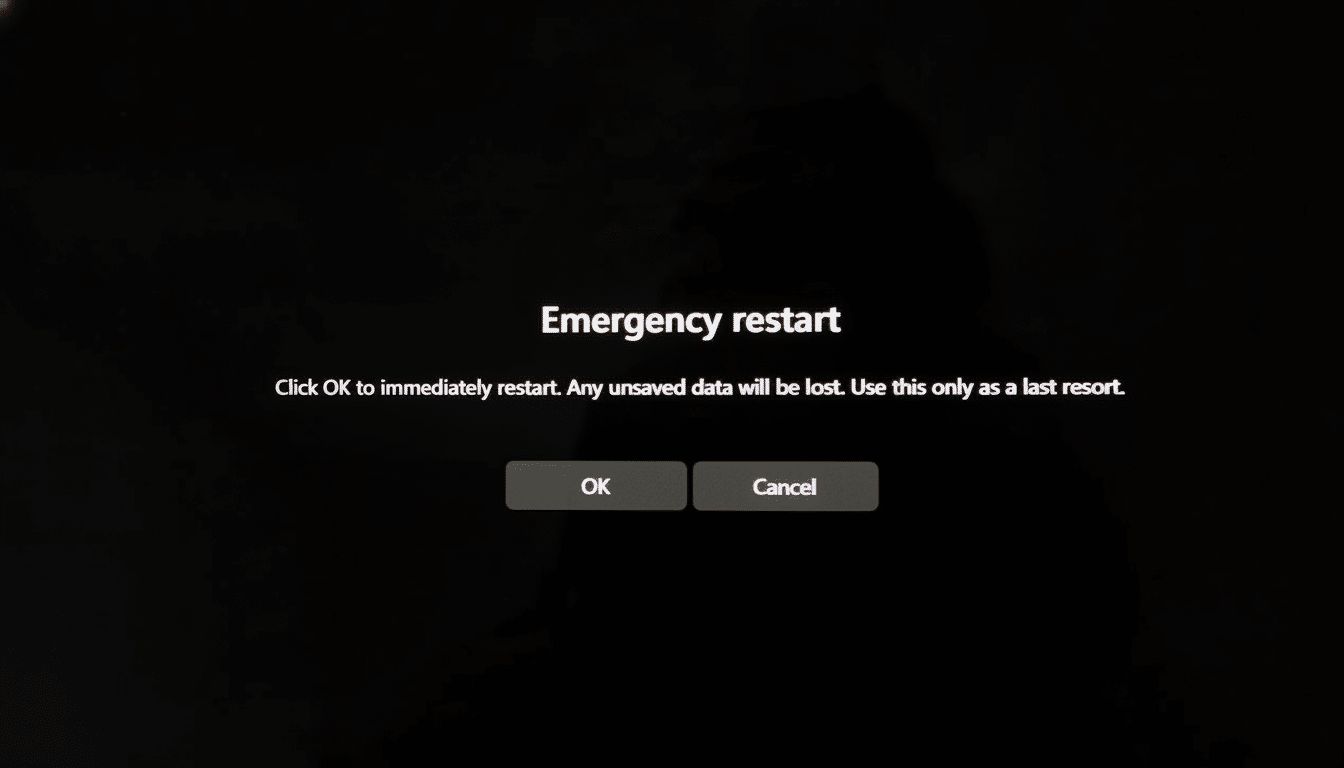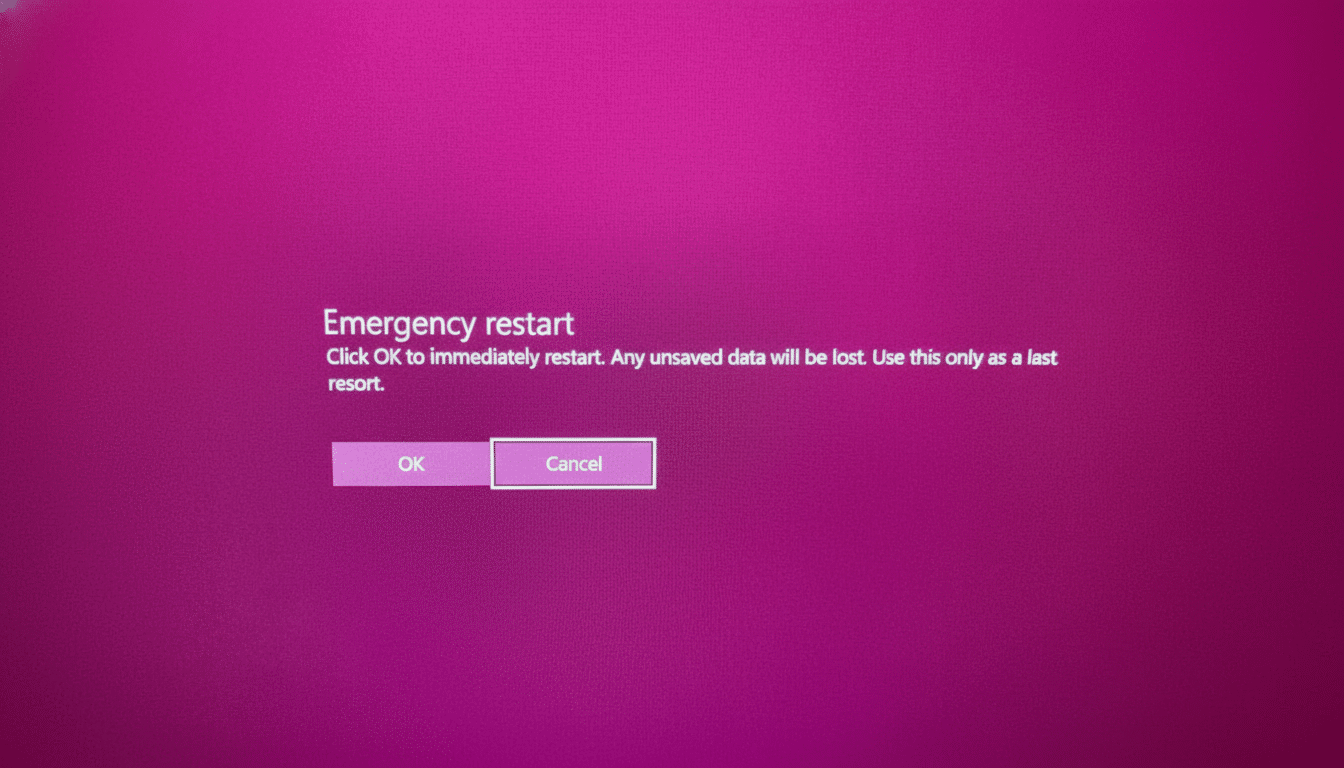Windows 11 has an emergency restart option that you can use during those terrible moments when your PC is completely stuck, your mouse’s left button doesn’t respond, and the Start menu doesn’t even run. The application is an integrated safeguard that allows the system to reset immediately and without the standard closing sequence of each app one by one, which is faster and cleaner than turning the physical power button off. While it isn’t new, it’s a feature you might not have known existed. Power users and experienced IT professionals rely on it for a reason. It typically works effectively when everything else on the desktop is stuck. You regain your computer quickly, but you lose any unsaved work.
What the Windows 11 Emergency Restart actually does
Emergency Restart works from the safe sign-in screen and will begin an immediate reset, leaving out the standard length of time required for programs to close and services to stop hanging. This is similar to a kind of software “reset button.” Apps won’t be able to close properly, you won’t be prompted to save your documents, and you won’t have to wait long.

Because it is possible to acquire this from the protected desktop and as it was used for numerous years, several seasoned administrators suggest it is much older than Windows 11. Microsoft’s documentation promotes the capability as an option for hard lockups, but the company is unsure how to combat it.
Exactly where to find the Emergency Restart shortcut
When all else fails and your PC is unresponsive, press Ctrl + Alt + Del to open the secure options screen. While on that screen, press and hold the Ctrl key, then click the power icon in the lower-right corner. A confirmation box appears stating you’re about to perform an emergency restart and warning that unsaved data will be discarded. Choose OK to reboot instantly.
I recommend utilizing this approach when the interface is effectively dead— a full-screen app won’t close, File Explorer has decided to give up now, or the Start menu and taskbar are all gone—overcooked. Even so, you can usually still press Ctrl + Alt + Del and then use the emergency reboot shortcut. The Ctrl-key method is notably appealing on kiosks, virtual machines, and laptops where reaching or holding a physical power key is cumbersome, and in remote support sessions where the shell has drunk a few too many but the secure desktop still picks up keypresses.

Risks and related recovery shortcuts in Windows 11
Naturally, the risks are relatively straightforward. First and foremost, you lose any unsaved documents—a catastrophic obstruction! Additionally, any operation in progress, such as installing drivers or applying updates, may be interrupted. NTFS journaling minimizes, but does not eliminate, the risks of file system corruption. Additionally, if your computer utilizes BitLocker with a pre-boot PIN, you can expect to see that dialog again after reboot.
If the desktop still responds a little, these alternatives can help:
- Press Ctrl + Shift + Esc to open Task Manager and restart Windows Explorer from the Processes tab.
- Use Win + Ctrl + Shift + B to reset the graphics driver and revive a black screen without a full reboot.
- From a command line, run: shutdown /r /t 0 /f.
- A brief press of the physical power button sends a standard ACPI shutdown signal; holding it for several seconds is a hard power cut—use that only if the keyboard shortcuts don’t work.
Why this hidden option matters for troubleshooting
Support teams lean on Emergency Restart for systems locked by a rogue full-screen app, for Surface and other compact devices tucked into mounts, and for servers or VMs whose shells have crashed but still accept secure attention keys. It’s faster and generally safer than yanking power because it uses the operating system’s own mechanisms to pivot straight to reboot. Microsoft’s Learn guidance frames it as a last-chance recovery path; tech publications as well as long-running sysadmin communities have highlighted the shortcut’s reliability in practice. Windows Internals experts have long emphasized the difference between orderly shutdowns, forced terminations, and resets; Emergency Restart sits near the reset end of that spectrum—decisive, but not something to use casually.
Bottom line: memorize the path—Ctrl + Alt + Del, hold Ctrl, click the power icon, confirm—and keep this tool in your troubleshooting kit. When your PC is stuck and patience runs out, it can get you back to a clean boot in seconds.

